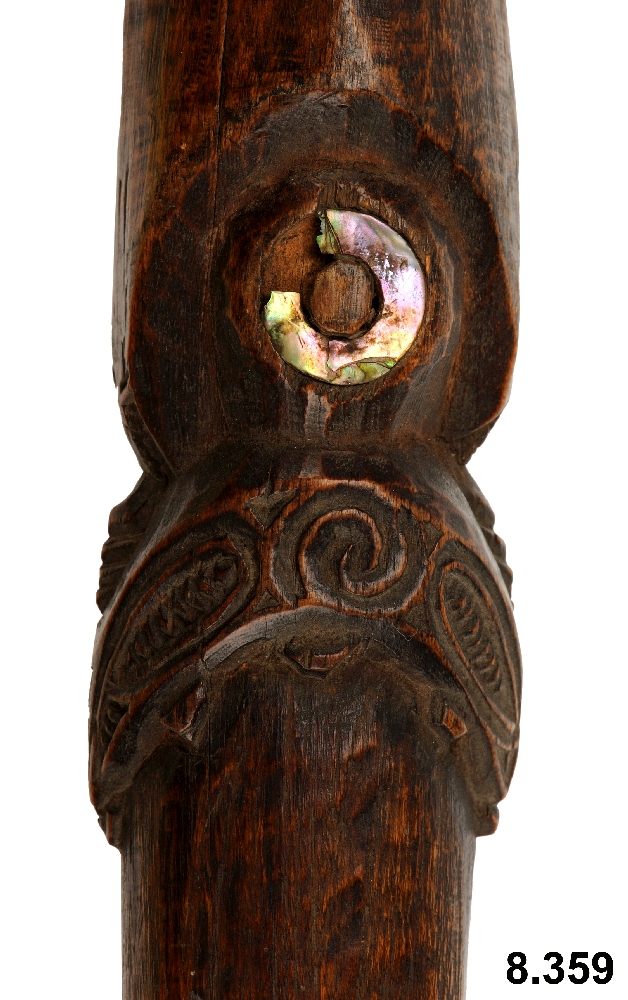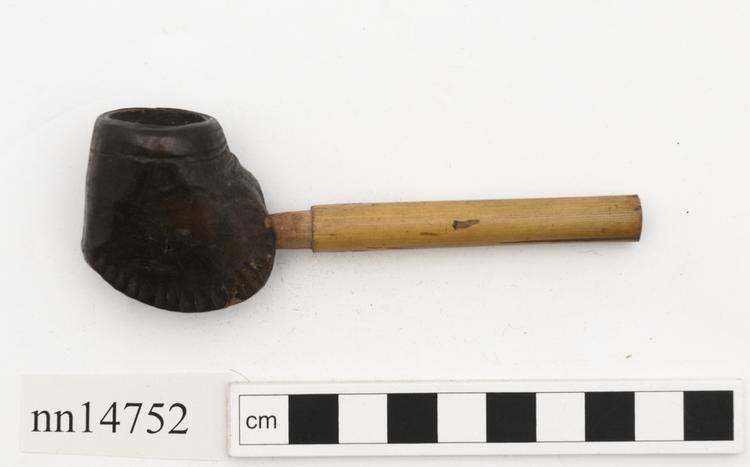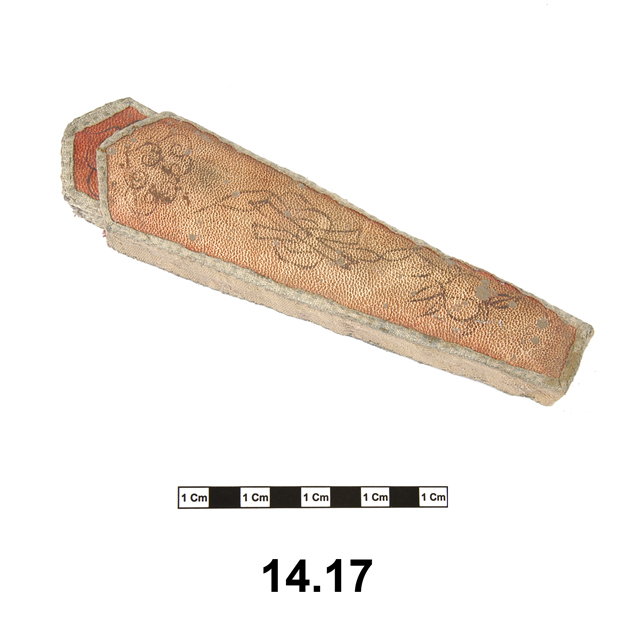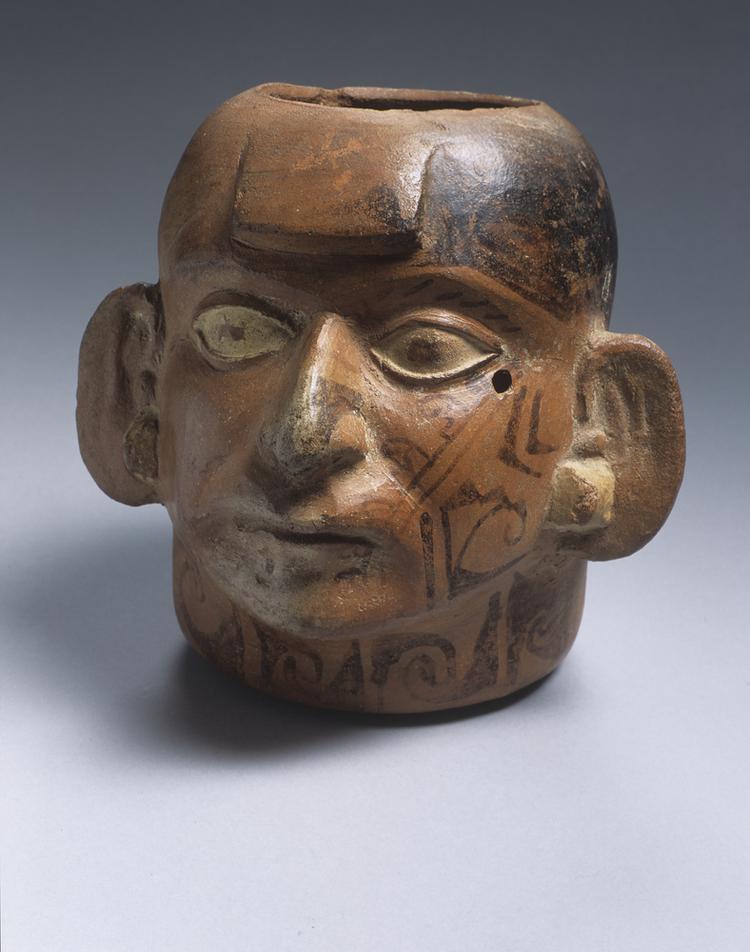
Flag shaped club, from New Zealand, with a tapering shaft coming to a point and a blade shaped like a quarter circle behind the striking edge. The club is entirely plain with the exception of a janiform manaia bust near the pointed butt, decorated with a circle of shell. One piece missing. Dark wood.
Back-Weighted Club, Tewhatewha, New Zealand Maori. The tewhatewha was one of a number of backwards-weighted club forms carved by the Maori, although it was the only two-handed weapon with this peculiarity that they produced. Cut from totara wood (Podocarpus totara), it was wielded so that blows were landed with the straight, flat side. The quarter-circle wooden fillet behind the head increased the mass that moved through the point of impact. This fillet was invariably pierced underneath for the attachment of a feather or flax-fibre tassel; while fencing, the Maori warrior (toa) would flick this tassel back and forth to distract the enemy’s eye, before making a rapid head strike. A little above the tapering butt that could also be used as a stabbing weapon, a pair of opposed masks are carved which reflect the fact that the Maori, like many other Pacific peoples, traditionally regarded weapons and other significant tools as becoming named, supernatural beings over time. Wood. Mid 19th Century. Purchased for the Horniman Museum from an unknown source by Prof A. C. Haddon.
fighting



















































































































































































































































































































































































































































































































